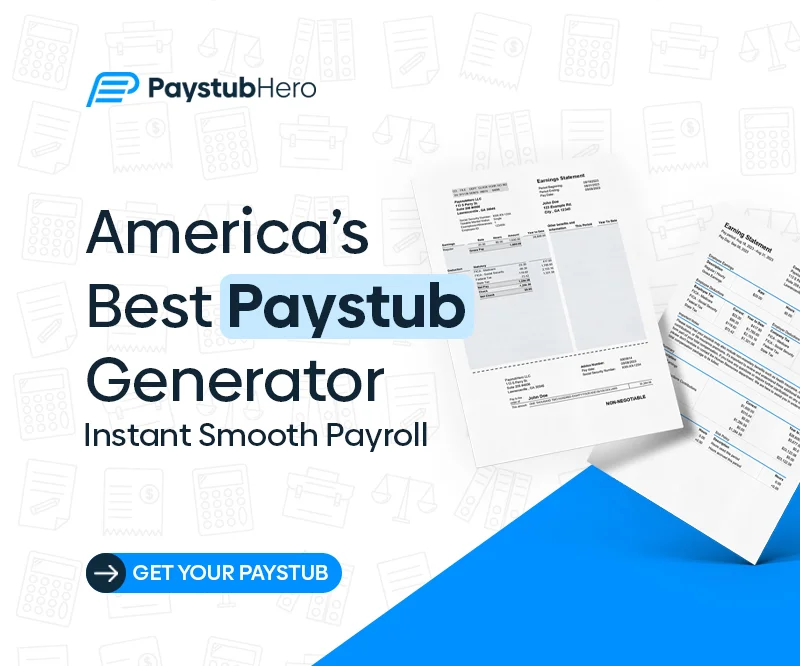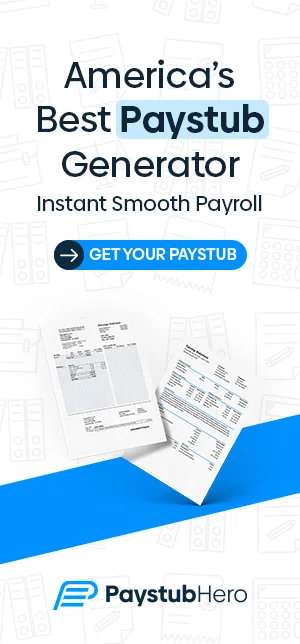Paying employees is not just about compensation—it’s about appreciation. As a small business owner, finding the best way to pay employees is a significant decision that can dramatically impact your business and your team’s satisfaction.
The best way to pay employees in a small business is to establish a consistent payroll schedule, determine fair and competitive wages, and utilize a reliable payroll system to ensure accurate and timely payments.
Navigating the different types of payment methods can seem daunting. Between paper checks, direct deposits, pay cards, and digital wallets, the options might seem endless. But making the right choice is vital—it can set the tone for your business, demonstrating your commitment to your employees and showing your understanding of their needs and preferences.
Today, we delve into this crucial topic, exploring the importance of managing people efficiently, the various types of payment, and the role of payroll management tools.
Table of Contents:
- Introduction
- The Importance of Managing People Efficiently in Small Business
- Types of Payment: An Overview
- Evaluating the Best Way to Pay Employees in a Small Business
- Enhancing Employees Management with the Right Tools
- Conclusion
The Importance of Managing People Efficiently in Small Business
In the dynamic landscape of a small business, the most vital asset often isn’t the products or services offered, but the people who contribute their skills and efforts to make everything possible. It’s these individuals who interact with your customers, build your products, and represent your brand. Therefore, the significance of managing people efficiently cannot be overstated.
Effective people management goes far beyond just overseeing tasks; it involves cultivating an environment where each employee feels acknowledged, supported, and motivated to do their best. In this respect, the way you compensate your employees plays a crucial role.
After all, payment is not just about exchanging money for services rendered—it’s also a reflection of how much you value their work and contributions.
Choosing the right payment method becomes a part of your overall people management strategy. When employees receive their hard-earned money in a convenient and preferred manner, they feel respected and valued, which can drastically improve their morale and productivity.
In fact, a survey conducted by the Society for Human Resource Management (SHRM) found that 78% of employees said the way they’re paid greatly impacts their job satisfaction.
Conversely, inefficient payment methods can lead to frustration and a lack of motivation among your team members, potentially resulting in lower productivity. Hence, the decision about how to pay your employees in a small business has a significant ripple effect, touching multiple facets of your operation.
Therefore, as you plan your people management strategy, it’s vital to focus on choosing the best way to pay your employees—a decision that not only benefits your staff but also promotes efficiency and growth for your small business.
Types of Payment: An Overview
In the realm of payment methods, there’s no one-size-fits-all solution. What works best for one small business might not be ideal for another. The types of payment you choose can influence your operations significantly, dictating the speed of transactions, the level of convenience for your employees, and even your business’s security.
Thus, understanding these types and their implications is key to making an informed decision.
- Paper Checks: While seemingly old-fashioned in our increasingly digital world, paper checks are still used by a significant number of businesses. They offer a tangible record of payment and don’t require your employees to have a bank account, making them suitable for those without easy access to banking services.
However, the use of paper checks involves time and resources, as they need to be printed, signed, and distributed. Additionally, they carry certain security risks, such as the possibility of loss or theft.
- Direct Deposit: A modern favorite, direct deposit is currently the most popular form of payment among businesses and employees alike. This method transfers funds electronically from your business account directly into your employees’ bank accounts.
It’s fast, secure, and eliminates the need for physical checks, saving time and reducing environmental impact. The downside is that it necessitates employees to have a bank account, which may not be possible for everyone.
- Pay Cards: Pay cards function much like a prepaid debit card, where an employee’s earnings are loaded onto the card. These can be a great option for employees without a bank account. While they offer convenience, be aware that some pay cards might come with fees for the user, which can affect your employees’ take-home pay.
- Digital Wallets: The rise of the digital era has brought about innovative payment solutions, including digital wallets. Platforms such as PayPal, Venmo, and Cash App enable instant payment transactions that are quick and straightforward.
They are especially favored by younger, tech-savvy generations and remote employees. However, they might also come with transfer fees, and not all employees may be comfortable with this relatively new form of payment.
By understanding these options and their implications, you’re in a better position to choose a payment method that aligns with your employees’ preferences and your business’s needs, making for a smoother and more efficient payroll process.
Evaluating the Best Way to Pay Employees in a Small Business
Choosing the best way to pay your employees in a small business is not a decision to take lightly. It requires careful consideration and a clear understanding of your employees’ needs, your business’s capabilities, and the potential impact on your overall operations.
To begin with, consider your employees’ preferences. Do they have a bank account, or do they prefer to receive a physical check? Are they comfortable with receiving payments through digital platforms, or do they prefer a more traditional method?
Engaging your employees in this conversation can help ensure their needs are met and that they feel valued.
Next, examine your business’s infrastructure. Do you have the necessary resources to handle paper checks, or would a digital method be more efficient? Consider also the potential costs associated with each method. While certain forms of payment may appear to be less expensive initially, they might come with hidden costs, such as transaction fees or the resources needed for administration.
It’s also important to consider the legal aspects. Ensure that the payment method you choose complies with state and federal wage and hour laws. For instance, certain states have regulations around using pay cards or may require that you provide the option of a paper check.
Moreover, consider the scalability of your chosen payment method. As your business grows, your chosen payment method should be able to adapt and cater to an expanding workforce without adding unnecessary complexity.
Finally, consider seeking external data to inform your decision. A study by the National Small Business Association found that 53% of small businesses prefer direct deposit due to its efficiency and lower cost.
Meanwhile, digital wallets are gaining popularity among businesses with a younger or remote workforce.
However, remember that every business is unique, and what works best for others may not necessarily be the best fit for your small business. The best payment method ultimately depends on the specific needs and circumstances of your business and your employees.
The goal is to strike a balance between convenience, efficiency, and satisfaction—ensuring your employees feel valued and your business runs smoothly.
Enhancing Employees Management with the Right Tools
In our technology-driven age, businesses no longer have to bear the brunt of tedious manual tasks, thanks to a multitude of tools designed to streamline processes and improve efficiency.
When it comes to paying your employees, integrating the right tools into your workflow can significantly enhance your management capabilities while reducing the chances of error.
Payroll software solutions, for instance, have revolutionized the way businesses handle their payroll processes. These software platforms are capable of automating calculations, adhering to tax laws, and even generating paystubs.
This not only ensures accuracy but also frees up valuable time for you to focus on other aspects of your business.
A solution like Paystubhero, for example, is tailored specifically for entrepreneurs, freelancers, small businesses, and independent contractors who may not have the budget or need for more complex systems like ADP or Gusto.
It’s a more robust and simplified solution that allows users to generate their documents quickly and efficiently. With just a few clicks, you can enter your company and employee information, and the software handles the rest—taking the guesswork out of payroll calculations.
Additionally, many of these payroll software tools come with user-friendly interfaces and supportive customer service, making the transition to digital smooth and straightforward.
They can easily integrate with your existing HR systems, ensuring a seamless flow of information between different business functions.
Moreover, adopting such tools signals to your employees that you are invested in utilizing modern technology for their convenience and satisfaction. This can boost their confidence in your business and enhance their overall job satisfaction.
In essence, integrating the right tools into your payroll process doesn’t just mean simplifying your tasks—it means elevating your entire business operation.
The right software can help ensure that your employees are paid accurately and on time, every time, paving the way for a happier, more productive workforce.
Conclusion:
In the grand scheme of small business management, figuring out the best way to pay employees might seem like just another task on the to-do list. However, its implications go far beyond just a simple exchange of money for services rendered.
It is a decision that stands at the crossroads of employee satisfaction, operational efficiency, and legal compliance.
Successfully navigating the landscape of small business payment methods requires a keen understanding of your employees’ needs, an honest evaluation of your business’s capabilities, and a comprehensive view of the various payment types.
By selecting a method that aligns with these factors, you can ensure that your employees feel valued and respected, which in turn can significantly improve their productivity and overall job satisfaction.
Additionally, the value of integrating the right tools into your payment process cannot be overstated. In today’s digital era, leveraging technology to streamline your payroll can save you time, reduce errors, and provide a more satisfying payment experience for your employees.
Software solutions such as Paystubhero can simplify this process, ensuring that your payroll is accurate, timely, and compliant with regulations.
Finding the best way to pay employees in a small business may seem like a daunting task, but remember—it’s not a journey you have to embark on alone. There are resources and tools available to help guide you through this process, and the outcome is undoubtedly worth the effort.
A fair, efficient, and transparent payment process is not just an operational necessity; it’s an investment in your team’s motivation, trust, and dedication to your business’s success.
As you venture forth in your small business journey, remember that the way you pay your employees is a testament to how much you value their contribution.
Therefore, investing time and thought into this decision is not just good practice—it’s good business.
Frequent Asked Questions
What is the best way for a small business to pay employees?
The best way to pay employees in a small business depends on various factors like employees’ preferences, business infrastructure, and legal regulations. Direct deposit, paper checks, pay cards, and digital wallets are all options worth considering.
Which payment method is best for employees?
The best payment method for employees depends on their personal preferences and circumstances. Direct deposit is popular for its speed and convenience, while paper checks and pay cards can be preferable for those without a bank account.
How do I pay my employees without payroll?
If you’re looking to pay employees without a traditional payroll system, you could consider manual checks or direct bank transfers. However, using a simplified payroll software like Paystubhero can make the process more efficient and less error-prone.
Can I use Zelle to pay my employees?
Yes, you can use Zelle to pay your employees, provided they have a bank account that supports Zelle transfers. However, remember to consider transaction limits and the absence of a dedicated payroll system with tax and record-keeping functions.





